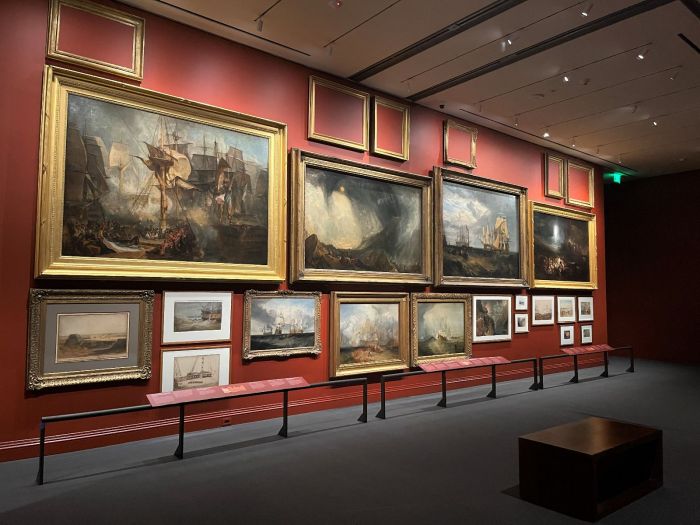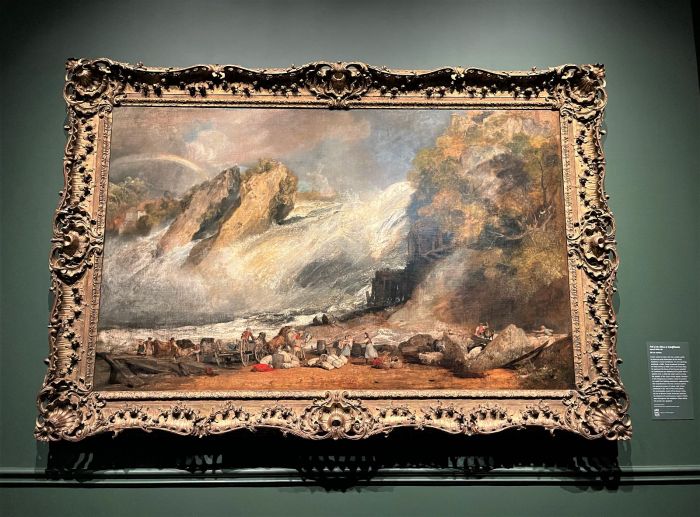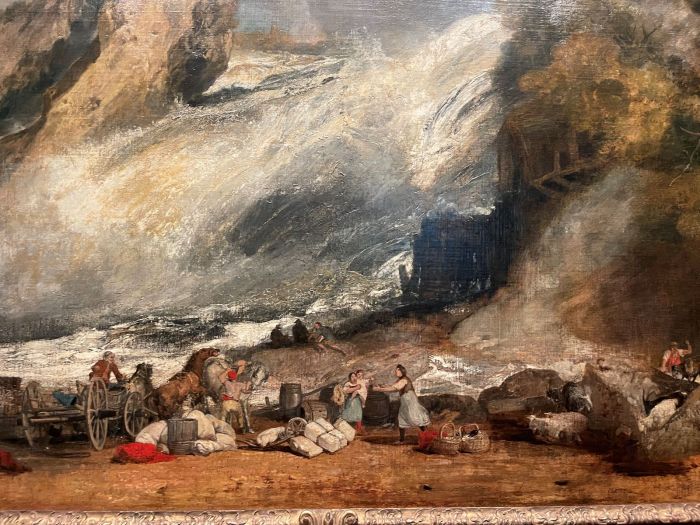Turner's Modern World at the MFA
MFA Boston Presents Landmark Exhibition of 100+ Works by J. M. W. Turner.jpg)
Landmark Exhibition of 100+ Works by J. M. W. Turner
MFA Boston is the Final Exhibition Venue, on view Mar 27–Jul 10, 2022
Opening at the Museum of Fine Arts, Boston (MFA), this spring, Turner’s Modern World brings together more than 100 works by one of Britain’s greatest artists, including paintings, watercolors, drawings and sketchbooks from museums across the U.S. and Great Britain.
What made J. M. W. Turner modern—his dedication to timely subjects and new
modes of depiction—also makes his art vital to our moment.
Many of the themes explored in his dramatic compositions are as urgent today as they were some two centuries ago: abolition and the legacy of slavery, the human cost of war, voting rights and the question of who should govern, new technology and the worker, and industry versus the environment.

Bold and assertive, and well ahead of his time, Turner has been classified one of the greatest artists of all time.
The exhibition is organized thematically into seven sections. The first, Early Works, follows Turner’s observations of contemporary life beginning in the 1790s. Sourced from the many sketchbooks he filled during trips around Europe, Turner’s drawings and watercolors record machinery, technology and working people.
.jpg)
.jpg)
A pioneering artist of Industrial Revolution, his work was a early form of photojournalism that gives viewers a peek into the changes taking place during this rapidly changing and tumultuous time.

The sublime power of nature is depicted in many of his early landscapes. Here one can almost hear the roar of the waterfall, and how small the people are in comparison to the vastness of nature.
(Full Landscape) Fall of the Rhine at Schaffhausen (about 1805–06), JWM Turner

(Up close) Fall of the Rhine at Schaffhausen (about 1805–06), JWM Turner
A major painting from this period, the MFA’s Fall of the Rhine at Schaffhausen (about 1805–06) expresses the force of the famous waterfall in the Swiss Alps. In the foreground, a mother rushes to protect her child from fighting carthorses, underscoring the insignificance of human concerns before the power of nature—a theme very much to Turner’s taste.
.jpg)
Not only are the large landscapes stunning - they become even more so when you zoom in to see the details.
.jpg)
This visual timeline depicts the major events that became the center of Turner's works. The exhibition takes you on a journey through that timeline in 6 different rooms dynamic coloring and design.
.jpg)
The smart layouts of each room, really help to capture the era and the scenes of what was taking place. It's a veritable history lesson revealed in fine works of art.
.jpg)
The crux of this landmark exhibition is the artist’s masterpiece Slave Ship (1840), a stinging indictment of the transatlantic slave trade, only on view at the MFA.
Boston is the third and final venue for Turner’s Modern World, following London’s Tate Britain and the Kimbell Art Museum in Fort Worth, and the only place visitors can see Slave Ship in a thrilling new context.
Slave Ship, while a striking and beautiful painting is painfully seductive. \This is not a sunset. The barbaric and gruesome scene had an incredibly galvanizing effect on the future of the abolitionist movement in Britain. One of Britain's most famous paintings, it has been owned and on display at the Boston MFA since 1877.
.jpg)
Slave Ship (1840)
Turner (1775–1851) lived through a tumultuous period. He witnessed wars, revolutions, social reforms and massive technological innovations that transformed the world around him. Reacting to these changes, he began painting in a radical new manner—a modern manner.
His exploration of luminous color was unparalleled, and his innovative brushwork anticipated by decades the loose strokes of the Impressionists in the 1870s and the gestural paint handling of the Abstract Expressionists in the 1940s and ’50s.
Turner’s Modern World investigates how one painter—more than any of his artist contemporaries—embraced changing times and committed to capturing them with a bold, distinctive approach.
To encourage new discourse and reflection upon Turner’s work some 170 years after the artist’s death, the MFA has enlisted a range of collaborators to introduce contemporary perspectives throughout the galleries.
.jpg)
New insights into the painting from artist Musa Harar, MFA trustee Sylvia Simmons and
Brandeis University professor Nancy Scott accompany in-depth interpretation of Turner’s masterpiece. Additional films feature discussion about what makes Turner modern—and what that means today—along with Turner’s watercolor technique.
These elements not only enhance understanding of the works on display, but also prompt visitors to consider connections to current issues and the role an artist can play in advocating for change.
.jpg)
In the final room, that transitions from the steel grey walls to the lighter more modern day scenes - the true nature of his impressionism can be witnesses. This room houses many of his "unfinished" pieces. As one looks closely, the suggestion of forms in the whaling series encourages the viewer to complete the forms. Turner was well ahead of the impressionistic era.
.jpg)
.jpg)
.jpg)
War. The Exile and the Rock Limpet (exhibited 1842, Tate).
This scene shows French military leader Napoleon in exile on the island of St Helena. He had been sent there after being defeated by a British-led army in 1815 at the Battle of Waterloo. Napoleon died in St Helena in 1821.
.jpg)
This work was painted in the year his ashes were returned to France. The image does not appear to celebrate or condemn Napoleon, but instead suggests the pointlessness of war.
The isolated uniformed body appears out of place in its surroundings. The red background invokes the trauma of battle. In verses attached to the canvas, Turner refers to the sunset as a ‘sea of blood’.
Turner's Modern World is on view for a limited engagement at the MFA Boston from March 27 - July 10, 2022 the last stop of it's world tour.
WHERE: Museum of Fine Arts, 465 Huntington Ave., Boston
WHEN: Through July 10
ADMISSION: Time-entry access tickets are required; included with general admission. $34 adults; $17 youth 7-17; free Adults, $34; Youth 7-17, $17; Members, free.
INFO: 617-267-9300; www.mfa.org
Museum of Fine Arts Boston
465 Huntington Ave.,
Boston, MA 02115
(617) 267-9300

Stacey Sao has been the Managing Director of the family-friendly events and activities website & popular weekly newsletter, BostonCentral for over 20 years. She continues to enjoy discovering and exploring new places to visit in the Greater Boston area.

